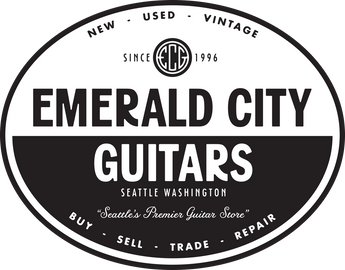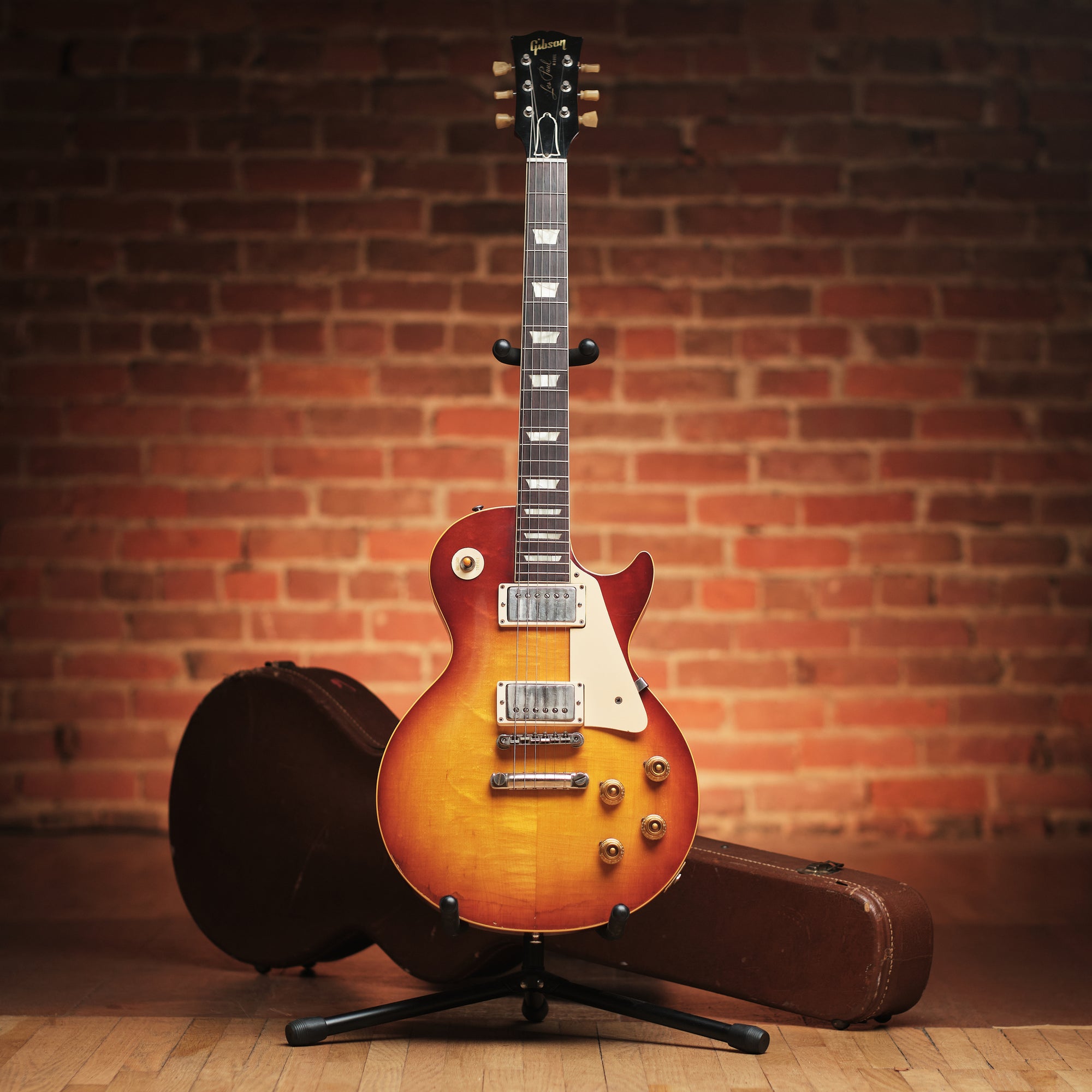1964 Fender Stratocaster Lake Placid Blue

Lake Placid Blue may have only been available on Cadillacs for a single year in 1958, but Fender’s use of the color from 1960-1973 have immortalized the DuPont shade in the hearts and minds of guitar fans worldwide. While all LPB looked the same from the factory, unintended yellowing of the clear topcoats often turned these alluring blue Fenders into a puke-adjacent green. Luckily for us, this particular example happens to be an ideal specimen that has remained immune from any displeasing shift of color.

While we do have a deep appreciation for squeaky-clean instruments, the moderate but tasteful play wear on this guitar exudes a sense of effortless cool; one that can’t be reproduced or replicated by any builder or custom shop on the planet. Apart from a well-executed refret, this Strat is all original and would be the centerpiece of any Fender collection you’re likely to come across.
1955 Fender Telecaster “Fraudcaster"

I am unashamedly fascinated by the art of forgery. Fine art, vintage wine, signed memorabilia, everything. Counterfeit guitars are probably much less common than people think, so coming across a real-deal forgery created with the intent to defraud is a tremenous, if not morbid, treat for us here.

The instrument in question is a 1955 Telecaster that was dressed up to look like a Broadcaster. Upon examining the guitar for the first time, I was dazzled both by the forger’s attention to detail as well as some glaring oversights. (The shop responsible for this modification became notorious for it, but still operates today in Los Angeles.) The headstock decal is slightly misaligned, but apart from this would be a nearly undetectable reproduction. The bridge has been cleverly modified and re-stamped with the serial number “004”, nearly believable if Fender had ever used 3-digit serialization. Even the control cavity is adorned with a convincing “Gloria” masking tape date indicating 1950 production. Some other identifying features, however, were inexplicably left untouched. The neck date, for example, still clearly reads “4-55.” The original pots still bear unobstructed codes dating them to the 49th week of ’54. Why take the time to re-stamp the serialized bridge but not obscure the pot codes? Why forge an intricate piece of lacquered masking tape but not pencil in an earlier neck date? I imagine it made a lot more sense in the days before the omniscient power of the internet made us all subject matter experts overnight. The 80s were a completely different era for vintage guitars, and maybe this is all it took to scam a guy at a guitar show out of $5000, even if he brought a screwdriver. Whatever the case may be, this Tele is a tremendous instrument that offers a unique insight into the early days of our collective obsession with the earliest and rarest guitars.
2013 Teye Rich Robinson

The age-old dilemma for musicians: you want a new guitar, but your wife wants a new ceramic kitchen backsplash. The solution? This beautiful creation from Teye Guitars. All levity aside, this striking instrument was master-built in 2013 for none other than Rich Robinson of The Black Crowes.

(The “RR” headstock engraving and “dragon slayer” motif on the back were requested specifically by Rich.) This guitar was used extensively over the last decade in the studio, and appeared countless times on stage live with the Crowes. This package is compete with a letter of authenticity directly from Rich and some included memorabilia from the man himself. Teye seems to be picking up where Zemaitis left off, offering professional-grade guitars that are works of art in and of themselves. This one is an impressive combination of stunning aesthetics and dependable functionality, with some celebrity provenance to boot.
. 
1965 Fender Stratocaster

1965 was an interesting transitional period at Fender. CBS is now at the helm, but most of the staff and day-to-day operations remain the same. Production is beginning to ramp up, but the materials, jigs, and fixtures are largely identical to the time of Leo’s tenure. ’65 was Fender’s final year employing the universally coveted Brazilian rosewood, as the CITES treaty of 1963 began to tighten regulations on endangered woods.

1965 was the first major inflection point in the trajectory of Fender; no longer just a small Fullerton-based business, Leo’s brainchild was now powered by a multi-national corporation that had its eyes set on higher output and lower overhead. Things would never be quite the same. This Strat is a perfect example of the quality Fender was capable of as their golden era came to a close. The sound, the playability, and the beautifully tasteful play wear make this guitar the quintessential 60s Strat.
1968 Rickenbacker 365

Throughout my career surrounding vintage guitars, a very small few of my opinions have remained consistent. One such opinion? I have absolutely no love for Rickenbacker guitars. It would quite literally take an act of God, then, for me to feel inclined to write a positive review of one. Alas, the day has come thanks to this 1968 360 in their classic Fireglo finish.

A signature feature of Rickenbacker necks are their relatively small frets completely buried in thick, sticky varnish that make the guitar agonizing to play. This example, however, feels completely smooth and navigable, similar to a Fender neck of the same era. Another departure from the norm lies in the tonal quality of the pickups in this instrument. This set of Toaster pickups is shockingly articulate and clear, and lack completely the tinnitus-inducing icepick treble you may be accustomed to hearing from Rickenbackers. Even the bridge on this guitar, which is conclusively one of the worst designed guitar components of all time, intonates and functions exactly as it should. Since 1931, Rickenbacker has made hundreds of thousands of instruments. I am convinced without a shadow of a doubt that this is the only good Rickenbacker on the face of the earth.




